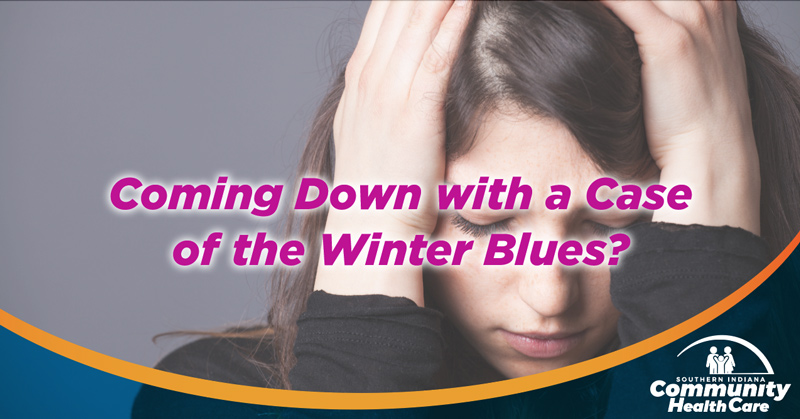Coming Down with a Case of the Winter Blues?

By Sean Salés, MD •
When clocks get set back and sunset falls at dinnertime, many people note feelings of sadness and low energy during the day, as well as possibly experiencing unexpected difficulty in concentrating or other similar symptoms. If this sounds like you, you may be experiencing Seasonal Affective Disorder (SAD).
SAD is a type of depression that reflects its name – when darkness and cold weather begins to set in as part of a major seasonal change, unusual symptoms and feelings may appear.
In Indiana, we at the Southern Indiana Community Health Care often first see seasonal affective disorders start to appear in the fall. The good news is that most SAD symptoms generally go away when Spring melts the snow and the days start to get longer.
Meanwhile, during the winter you can feel moody or like you’re in a “funk.” You may tell yourself to “snap out of it,” but symptoms stubbornly hang on.
SAD is real
It is important to understand that Seasonal Affective Disorder is a real type of depression. It’s most common in the winter months, but can appear (less commonly) during other seasons.
Do you have any of these feelings or conditions?
- Feeling sad and down much of the day, nearly every day.
- Having low energy, reduced “pep,” and feeling sluggish.
- Craving sweets and carbohydrates, even after you’ve recently eaten.
- Sleeping too much (or wanting to sleep more).
- Losing interest in formerly enjoyable and fun activities.
- Having a problem concentrating, even on formerly easy tasks.
- Having thoughts of hopelessness or not feeling worthy.
- Experiencing unwanted weight gain.
If you do, you’re certainly not alone.
The specific root cause of SAD is still unknown, but there are some clues:
- Reduced sunlight disrupts your biological clock (circadian rhythm). This may lead to feelings of depression or listlessness.
- A brain chemical called serotonin that affects mood drops. This is sometimes linked also to changes in daily sunlight. Lower serotonin can lead to feelings of depression.
- Levels of melatonin in your body may fall, affecting how well you sleep (or don’t sleep), which can lead to daytime tiredness and moody feelings.
- Low levels of vitamin D, which naturally is consumed in healthy foods and is produced by sunlight on skin. Vitamin D can help elevate levels of serotonin activity.
People who experience Seasonal Affective Disorder sometimes regularly see it return each fall, so it’s important to recognize the symptoms early and take steps.
Sometimes engaging in light therapy helps (you can read about available light therapy lamps in online reviews). Sometimes increasing consumption of fish (salmon, tuna, halibut, pickled herring, sardines), egg yolks, cheese, mushrooms, and foods fortified with Vitamin D (some dairy products, orange juice and soy milk) can help increase Vitamin D levels and also help produce serotonin.
Regular physical activity like walking can improve mood. Bundle up and walk around a few blocks – especially when it’s sunny (like during your lunchtime). If it’s too cold outside, consider walking in a gym area or even a retail mall.
When to see a physician or provider
Seasonal Affective Disorder (SAD) is a form of depression and left unchecked – especially during stressful times – can escalate. If you overeat or drink alcohol to “feel better,” it can lead to other issues.
The good news is that your physician or provider has many options to help treat SAD. When you can’t shake negative feelings, don’t wait. Get some help.
Don’t suffer needlessly through the winter blues. Take some focused steps today!
A long-time physician serving in the Southern Indiana Community Health Care office in Paoli, Sean Salés, MD is board-certified in Family Medicine and offers full-service primary care, including obstetrics.
